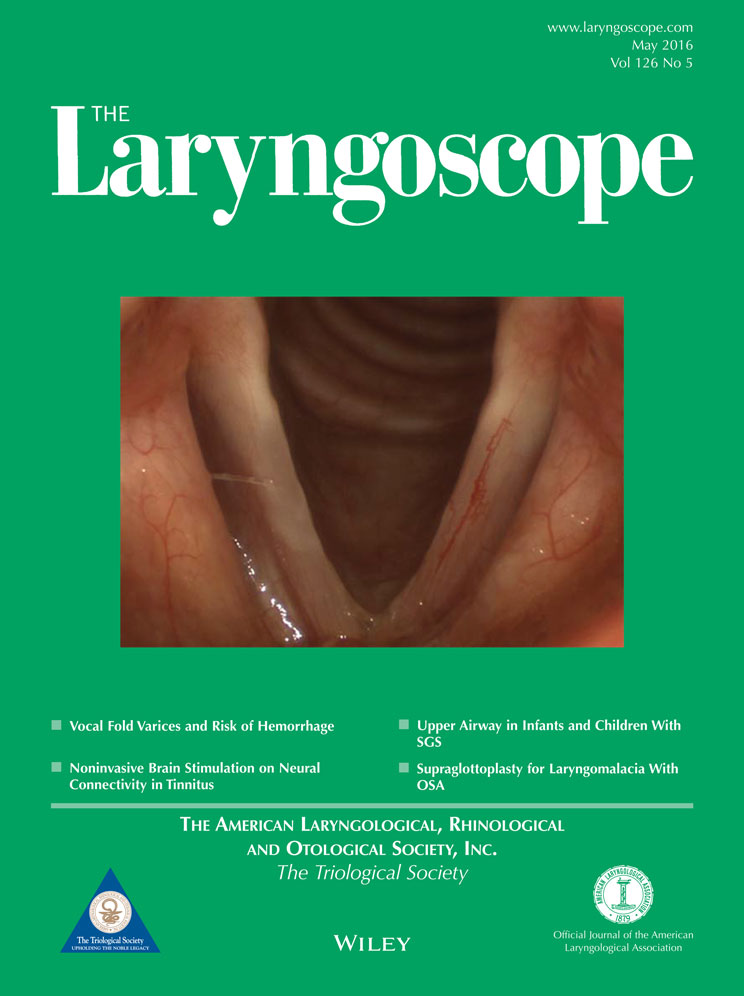Impact of adenotonsillectomy on nocturnal enuresis in children with sleep-disordered breathing: A prospective study
This work was supported by Priority Research Center Program through the National Research Foundation of Korea funded by the Ministry of Education, Science and Technology (2009-0094050). The authors have no other funding, financial relationships, or conflicts of interest to disclose.
Abstract
Objectives/Hypothesis
To investigate the relationship between sleep-disordered breathing (SDB) and nocturnal enuresis (NE) in children and to prospectively evaluate the effectiveness of adenotonsillectomy on resolving enuresis in indicated SDB patients with NE.
Methods
We prospectively collected data from 183 children (121 males, mean age 8.17 ± 2.84 years) who underwent adenotonsillectomy to treat SDB between July 2011 and July 2013, and analyzed the prevalence of NE. Before and 3 months after surgery, all parents were requested to answer a self-reported SDB scale questionnaire (22 questions, 0–22 points) and a NE questionnaire (episodes of enuresis per month). Paired t test, Student t test, and Chi-square test were used to analyze the data.
Results
Overall prevalence of NE was 9.3% (17 patients) preoperatively and 1.5% postoperatively (four patients). After adenotonsillectomy, prevalence of NE and the mean SDB scale were significantly decreased (both P values < 0.001). After adenotonsillectomy, 13 of the 17 NE patients (76.5%) showed complete resolution. There was significantly higher prevalence of NE in patients with obstructive sleep apnea (OSA) than those without OSA (13.1%, 14 of 107 vs. 3.9%, 3 of 76; P = 0.036).
Conclusion
There is strong association between NE and SDB, and adenotonsillectomy can markedly improve enuresis in the majority of children with NE and SDB.
Levels of Evidence
4. Laryngoscope, 126:1241–1245, 2016




